What do you think of when you hear the name Hoover? A vacuum cleaner? The 31st President of the United States? Voracious consumption of tasty snacks? Me – I think of the magnificent Hoover Dam across the Colorado River. Here’s how it looked on a recent visit, courtesy of my thrifty twenty-to-sixty zoom lens.
Construction of the Hoover Dam was one of the great engineering accomplishments of the 20th century. It spans a narrow gorge, separating Nevada and Arizona, through which the Colorado River used to flow. The dam impounds Lake Mead, serving to control floods, supply irrigation, and deliver hydroelectric power to neighbouring states.
A workforce of between 10,000 and 20,000 people built the dam, between 1931 and 1935. Recounting the remarkable details of the construction process, and the dam itself, would need a very long article. Nonetheless, a few figures are worth highlighting.
The dam is a concrete arch gravity design, and 221m tall. It is 200m thick at the base, narrowing to 14m at the top, wide enough to support a road. 1.1M cubic metres of material was removed during construction, and 2.4M cubic metres of concrete were poured to create the dam.
The cure
The construction engineers employed special measures, such as incorporation of cooling pipes, to cure the concrete over a reasonable timeframe. If they had used a single pour, the concrete would have taken 125 years to cool! Instead, they poured the concrete sequentially in large blocks.
A feature of the design I found fascinating was the incorporation of two massive spillways on either side of the dam (see below). On rare occasions when Lake Mead fills to overflowing, excess water flows over the spillways. It is carried away through gigantic tunnels carved through the sides of the gorge, rather than spilling over the dam.
The Hoover Dam was officially dedicated by President Roosevelt on 30 September 1935. Initially named the Boulder Dam, after the nearby town of that name, it was later changed to the Hoover Dam. Herbert Hoover had preceded Roosevelt as president, stepping down in 1931.
Lens choice
The Hoover Dam is not the type of subject you would typically tackle with a 50mm lens. Nor a 35mm for that matter. Of course, if that’s all you have with you, there would certainly be a few smaller scale features to photograph. You would probably get quite a long way with a 28mm lens. But a 24mm or, better still, a 20mm? Now we are talking.
I photographed the dam using a Lumix 20-60mm f/3.5-5.6 mounted on a Leica SL2.
I have written about this lens in earlier articles, and it is now my preferred choice for trips like this. Its 20mm maximum wide-angle setting is both unusual and extremely handy for architecture and landscape photography, in particular. Mounted on an SL2 body, with its superb 47 megapixel sensor, it enables cropping to achieve an effective 120mm or even 180mm focal length. It’s a piece of cake!
The lens is light, sharp, and on the slow side. But, in the bright Nevada sunlight, all my shots were taken well above its maximum f/stop. It is also incredibly inexpensive.
It’s truly a nifty piece of kit for the thrifty L-Mount photographer.
View from the nosebleed seats
Looking down on the dam from an elevated vantage point (see below) I fully appreciated its curved profile and sloping face. The designers chose a narrow gorge in which to build the dam, minimizing the width needed to span the gap. I also realised how tall the dam was.
Adjusting my position slightly, I looked further down the distant gorge, through which Lake Mead receded into the distance.
Down at the dam, as mentioned earlier, its top is sufficiently wide to encompass a road and pedestrian walkways. From these, I could admire the smooth, concave, curve of the dam wall on the south-west-facing side.
I could also look up at a spectacular bridge, from which I took the earlier shots. The Mike O’Callagahan – Pat Tillman Memorial Bridge was opened in 2010. It carries Interstate-11 and US-Route-93 between Nevada and Arizona, the latter having previously run along the top of the dam.
Looking down gives a stomach-churning view of the massive drop into the gorge below. The perforated concrete structures visible on the walls of the gorge are the jet-flow gates. I will explain their purpose below.
In which time zone is the Hoover Dam?
As I strolled across the dam, I made my way from Nevada to Arizona. Clocks located on towers either side of the dam remind passers-by of the one-hour time difference between the states.
Leica SL2 Lumix S 20-60mm f/3.5-5.6: Left 50mm f/6.3 1/1500s; Right 37mm f/6.3 1/500s
The Dam’s designers chose to use an Art Deco style for these and many other elements of the dam complex. Art Deco is typical of the 1930s, featuring in other famous buildings of the period, such as The Chrysler Building in New York.
Leica SL2 Lumix S 20-60mm f/3.5-5.6: Left 27mm f/6.3 1/400s; Right 44mm f/6.3 1/800s
Rear view
Having crossed to the Nevada side, I now saw the convex rear-face of the dam, and its four huge inlet towers. Through these, water from Lake Mead flows into the channels supplying the hydroelectric turbines below the dam. A wire mesh on the exterior of the towers prevents fish, and various detritus, from reaching the inner workings.
Looking northeast, beyond the inlet towers, Lake Mead curves away into the distance. The sharp line on the side of the gorge is the high-water mark of the lake. Below the line, pigments have been leached from the rock comprising the sides of the gorge.
The lake last reached that high watermark in 1983, during a period of intense rainfall in the area. There was no possibility of the dam overflowing, however. Its designers had built in a safety feature anticipating just this eventuality.
The Hoover Dam spillways
On both Nevada and Arizona sides of the dam are huge ‘spillways’. These allow controlled release of water building upstream of a dam, which would otherwise flow over the dam. Those at the Hoover Dam are enormous, each apparently capable of handling a flow comparable to that of Niagara Falls!
Above the walls of the spillway sit metal fins, like aeroplane flaps, which can be raised or lowered. These allow more precise control of the overflowing torrent, which rushes into the spillway, and down a huge tunnel mouth. At the bottom of the tunnel, the water blasts, in spectacular fashion, out of the jet-flow gates mentioned above.
For a final view of the dam, we headed up to the arched bridge above. The northeast side of the bridge has a pedestrian walkway, offering sensational views of the dam.
Hydroelectric
In the final image, you can clearly see the full height of the dam. To its left is a parking structure, used to accommodate the millions of visitors every year. To the extreme left, you can just make out an electric substation. This is part of the system supplying hydroelectric power, to Nevada in this case. The ravine below the dam is also criss-crossed by multiple electric cables.
The Hoover Dam is truly one of the wonders of the modern world. Over the years, it has featured in many motion pictures. Here are a few examples. The first illustrates the likely effect of an earthquake.
The second reveals what might be lurking down in the bowels of the dam:
I was fortunate to visit on a day with crystal-clear skies and excellent visibility. The low January sun cast deep shadows, especially deep in the gorge below the dam. But, using exposure compensation of -⅔ EV throughout, I generally avoided blown highlights while retaining detail in the shadows.
My thrifty twenty-to-sixty did a fantastic job once again. I highly recommend it as a one-lens solution for light-weight travel photography with an L-Mount camera.
Read more from Keith James
A cup of coffee works wonders in supporting Macfilos
Did you know that Macfilos is run by a dedicated team of volunteers? We rely on donations to help pay our running costs. And even the cost of a cup of coffee will do wonders for our energy levels.

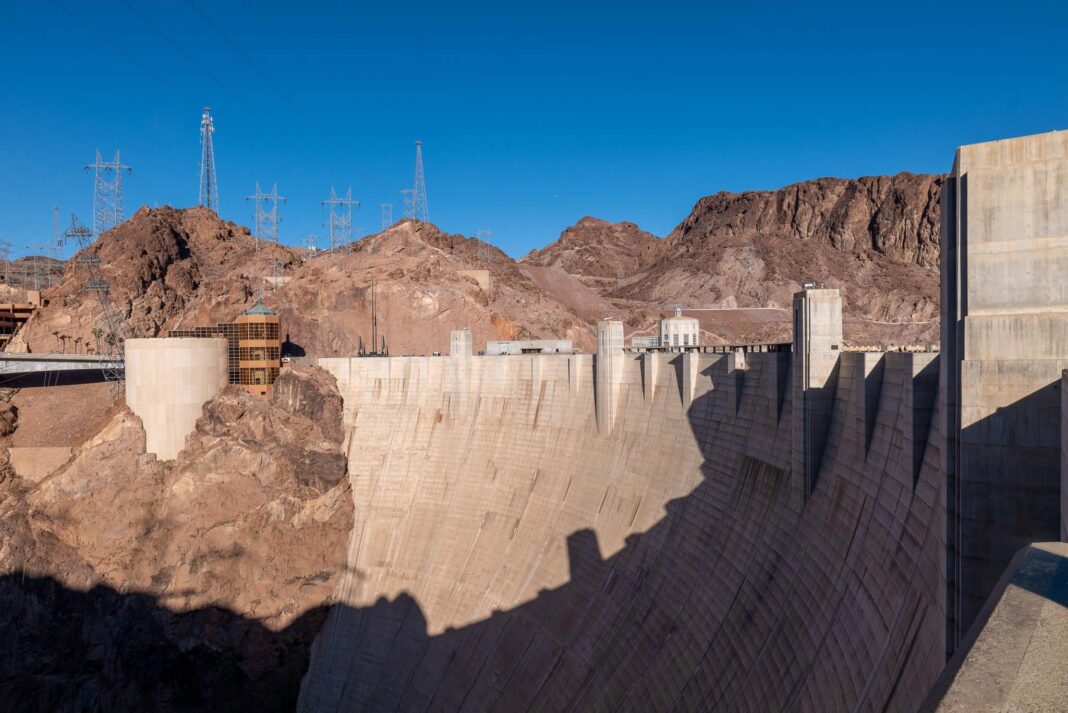
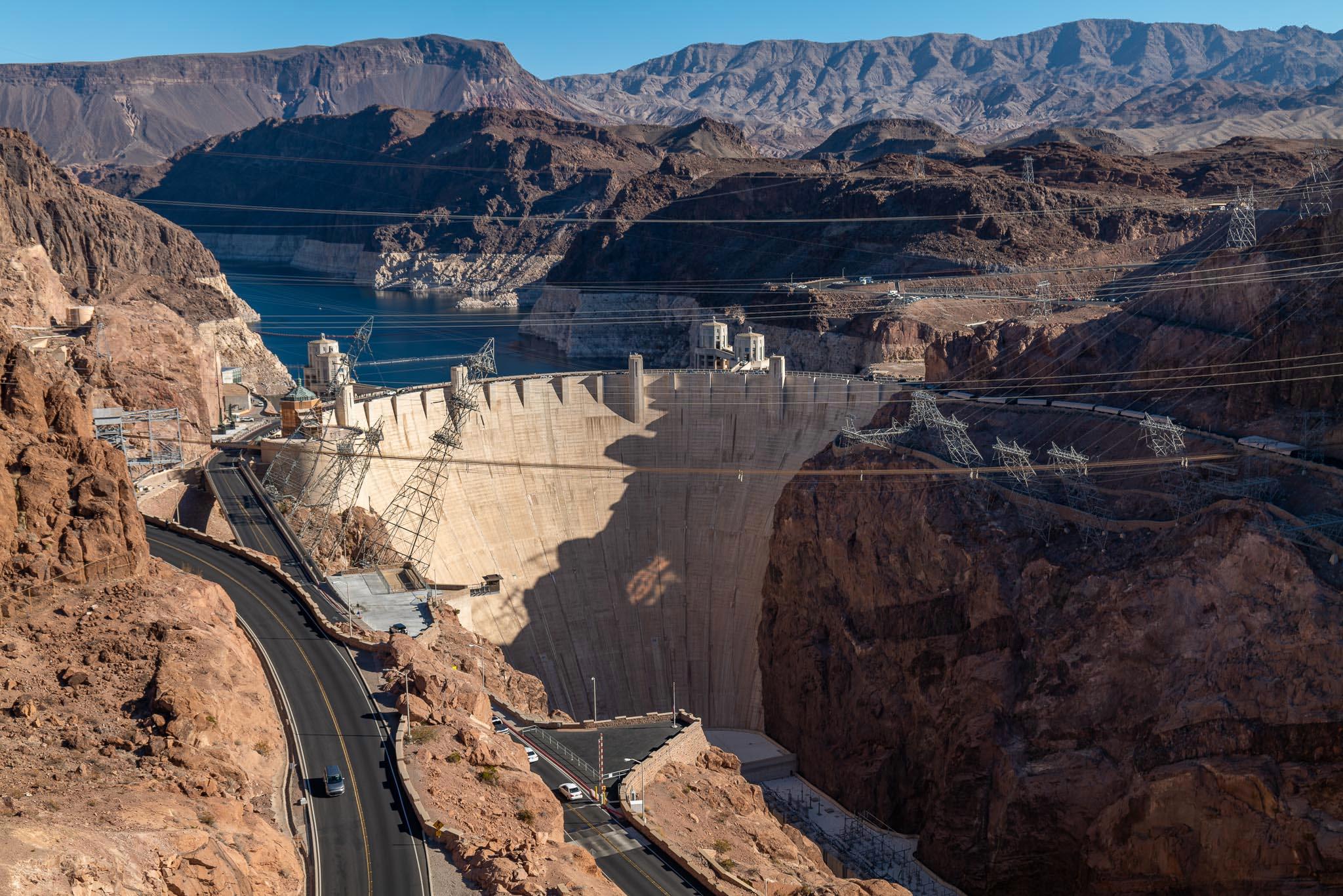
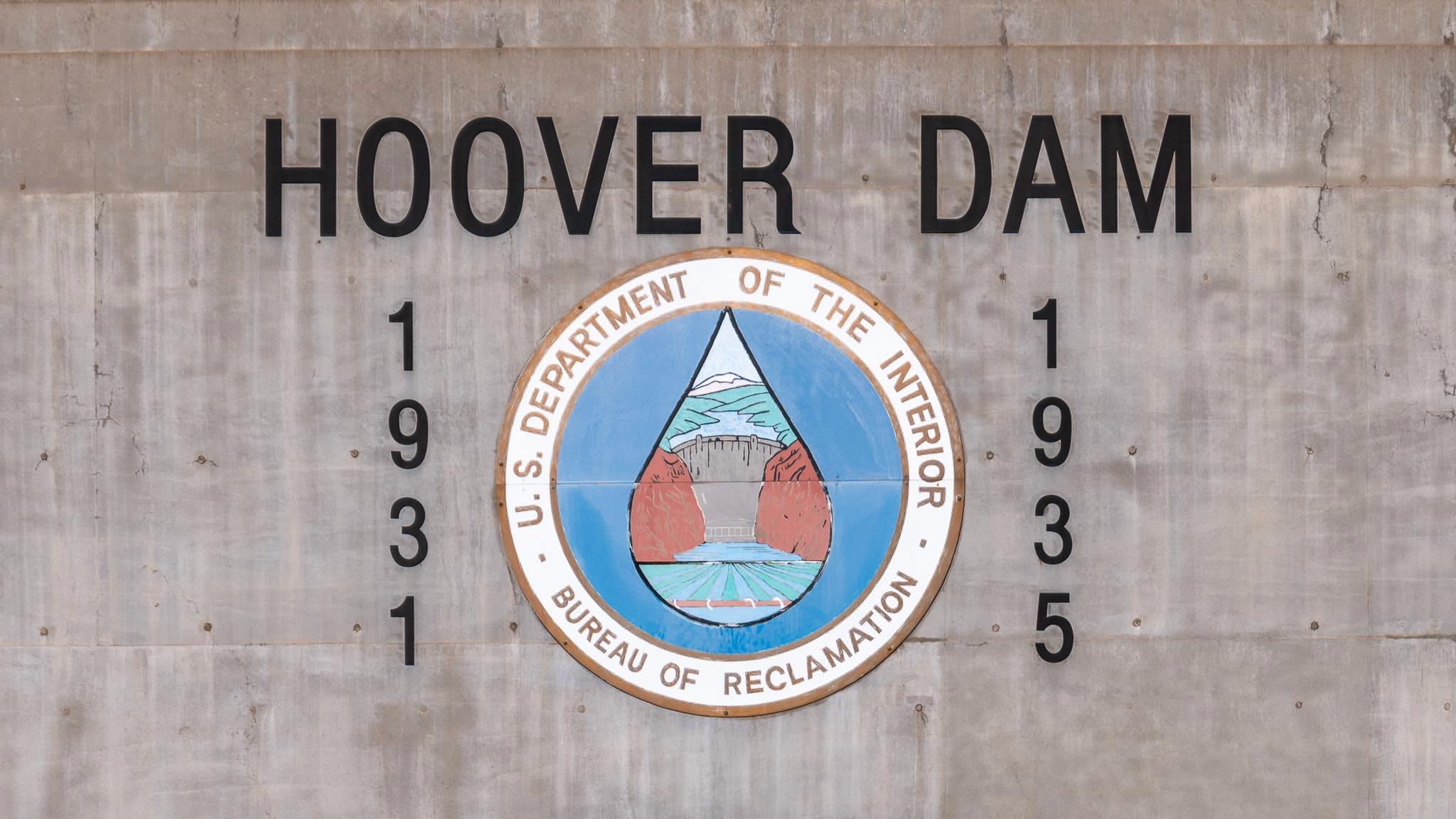
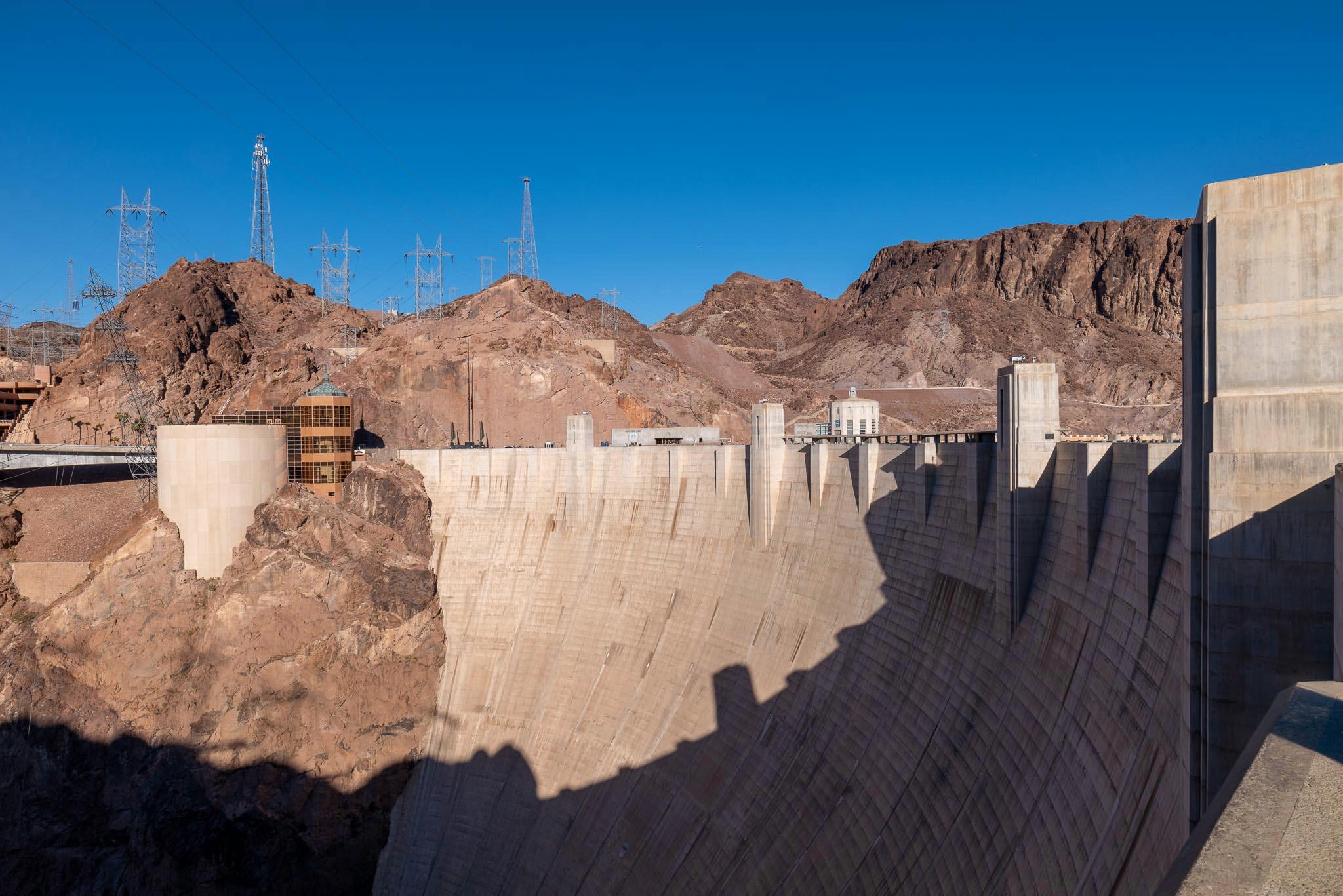
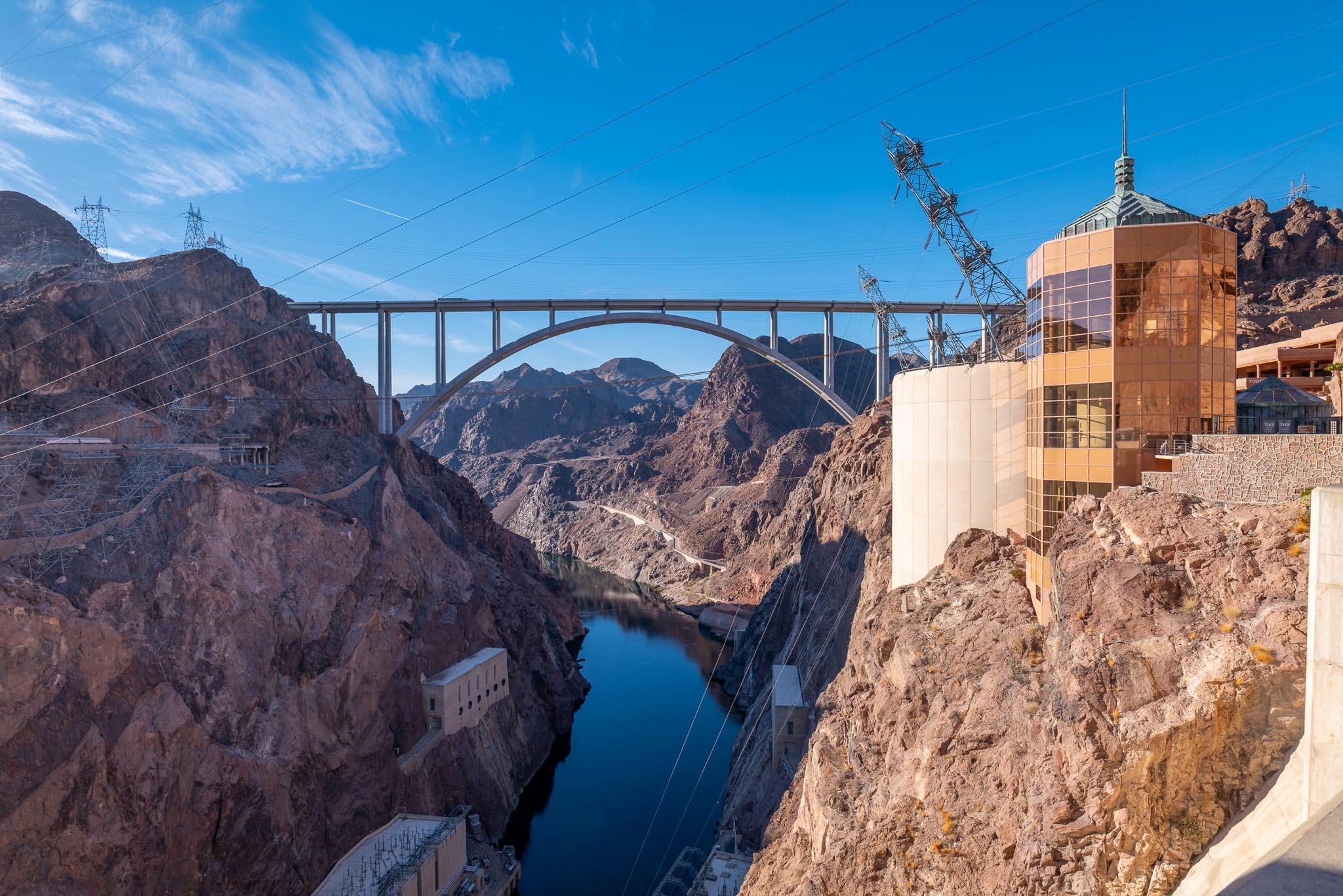

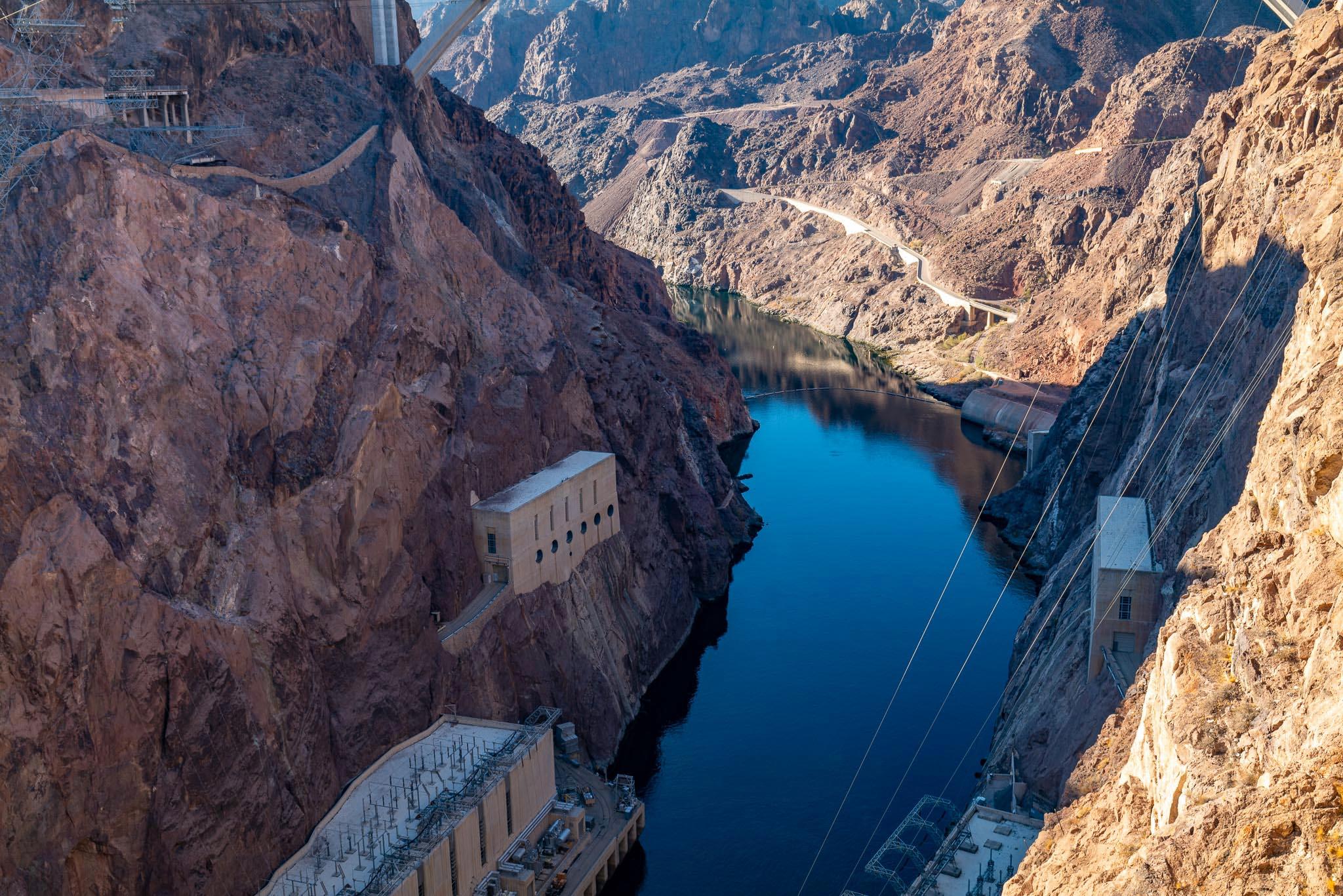
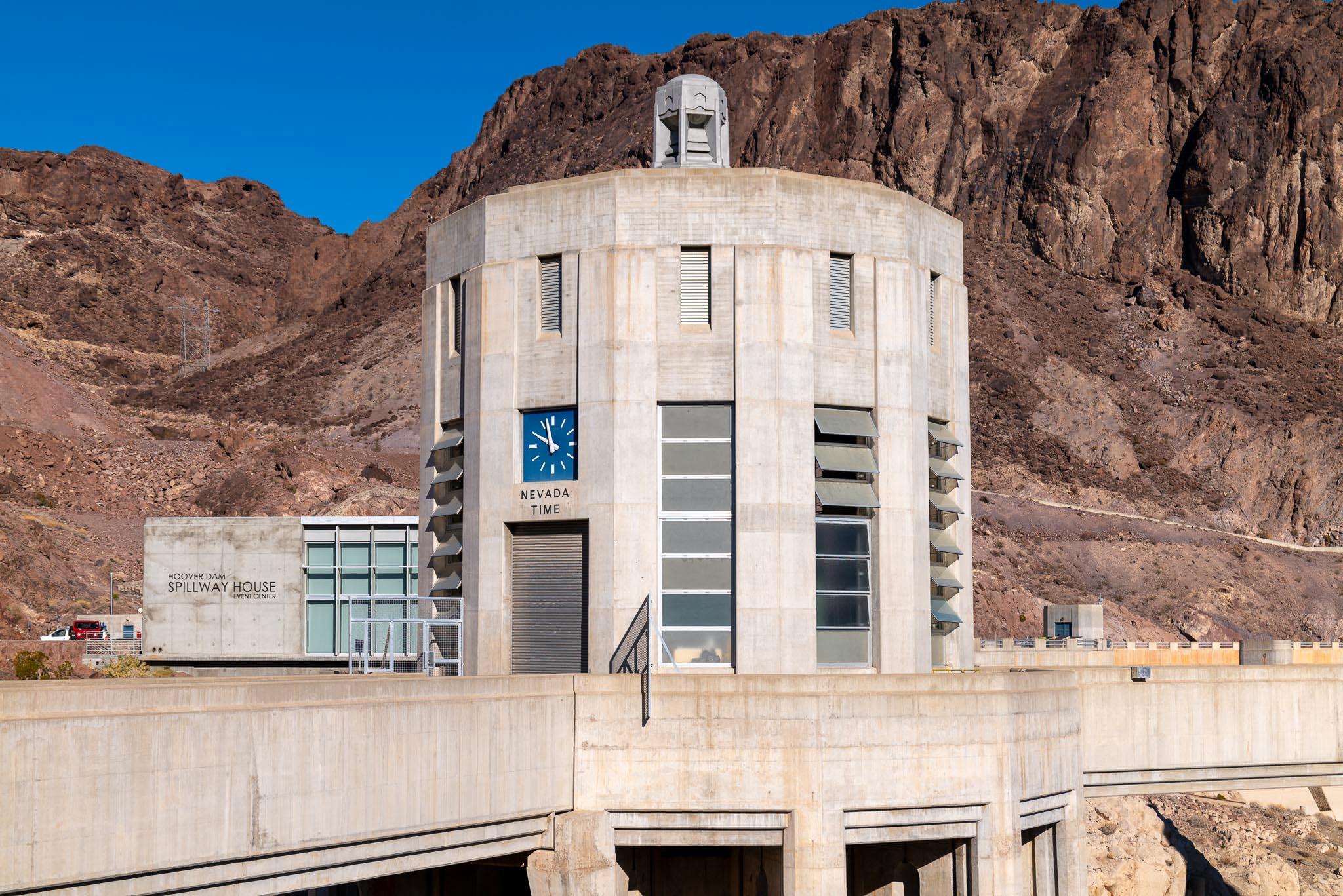
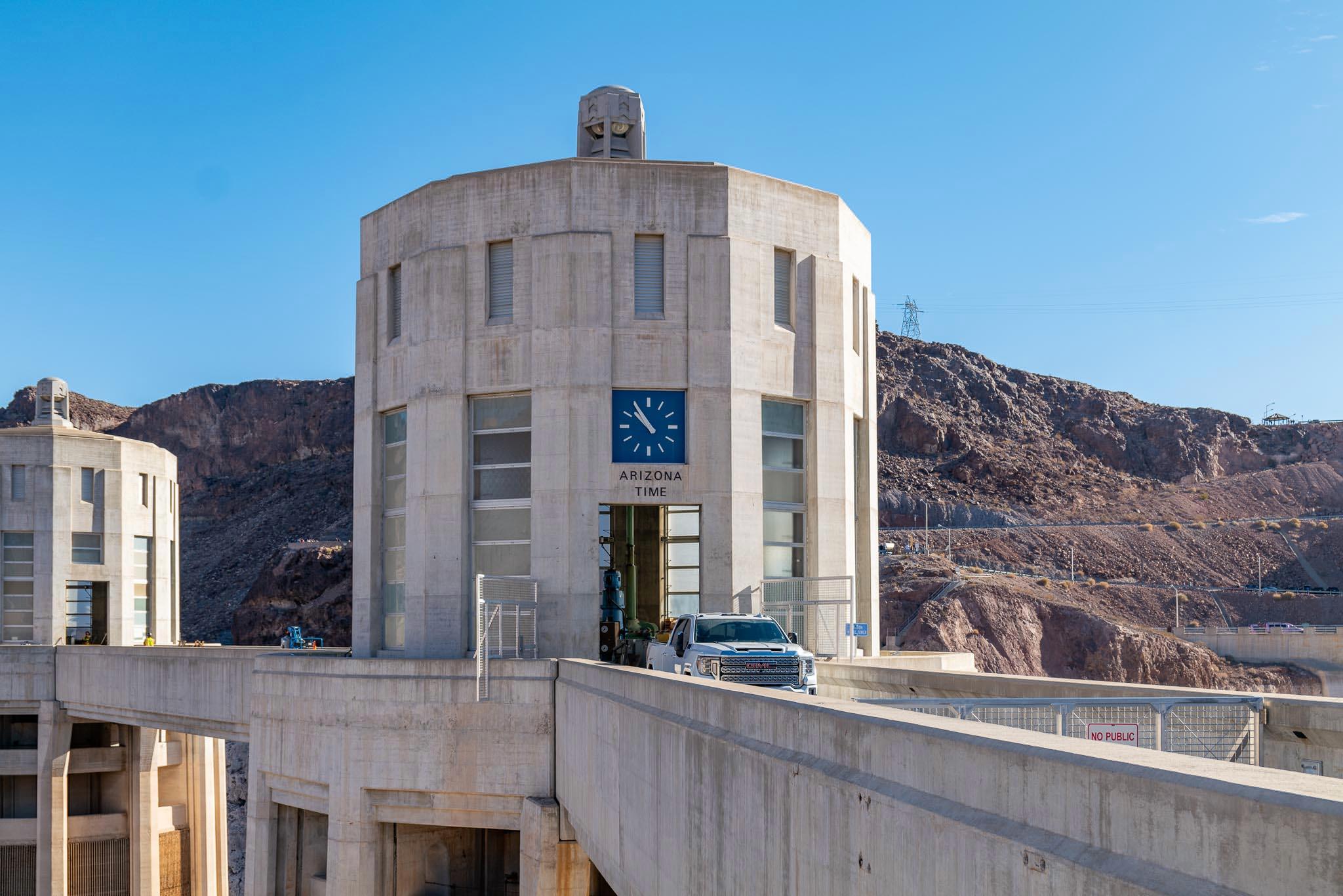
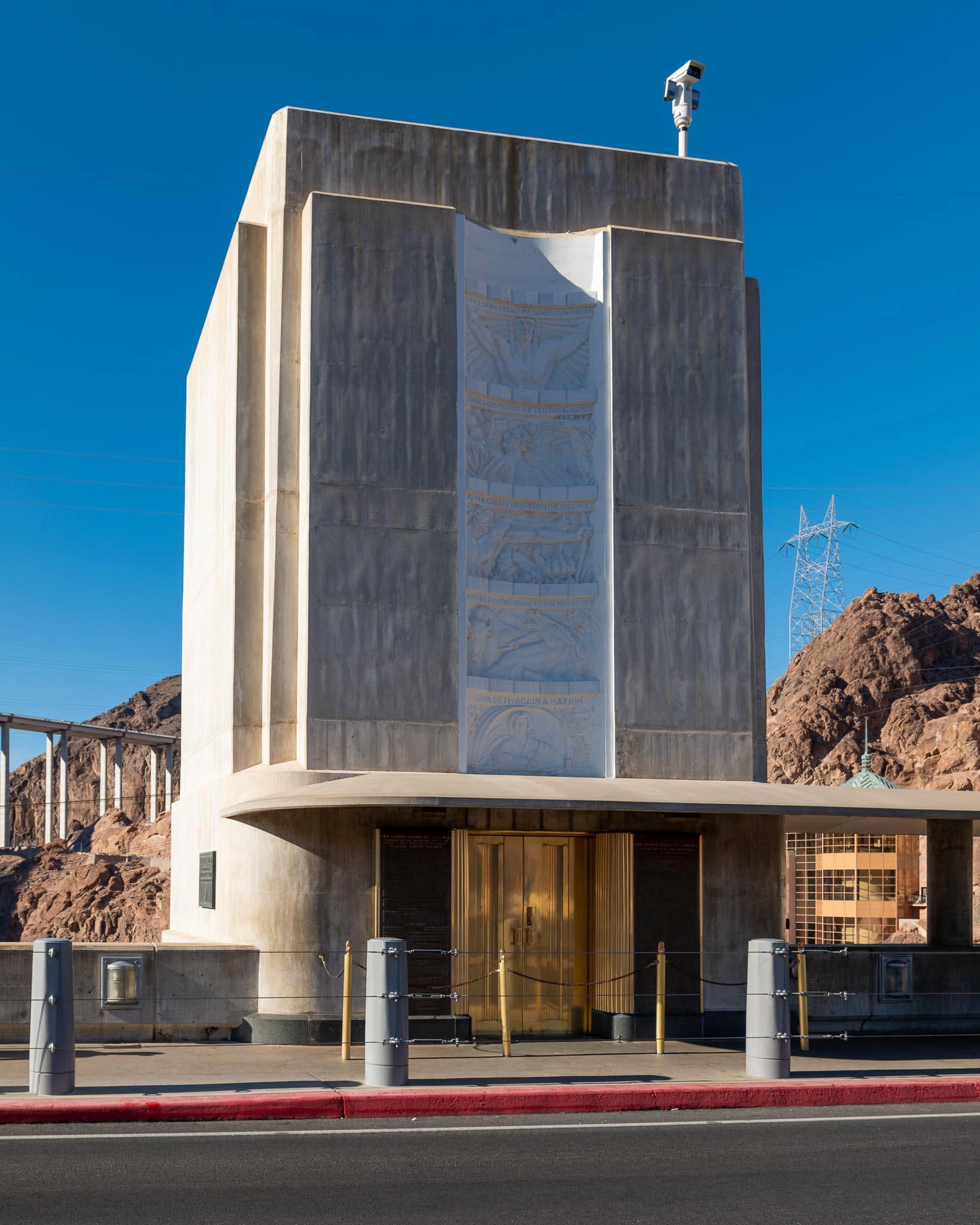
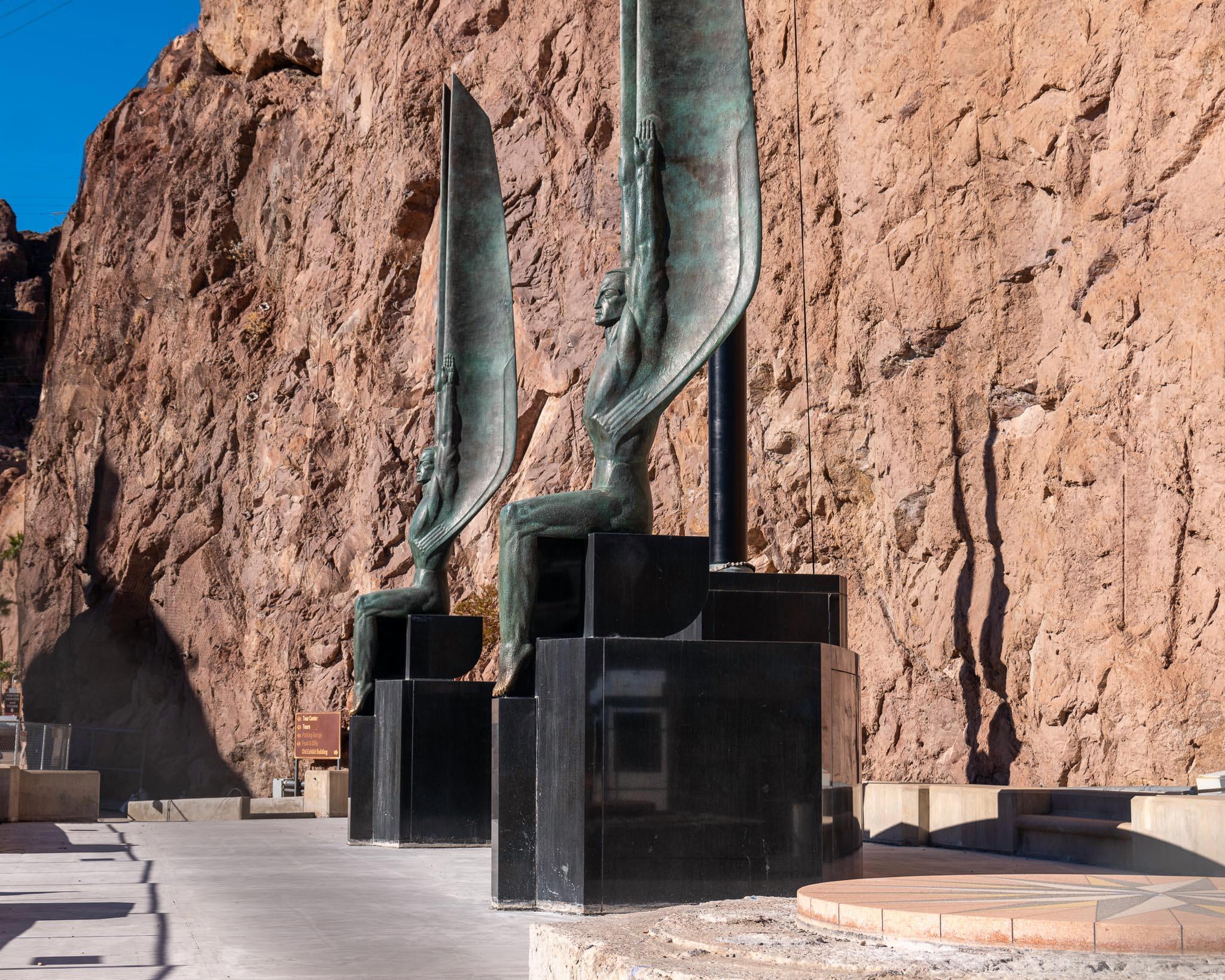
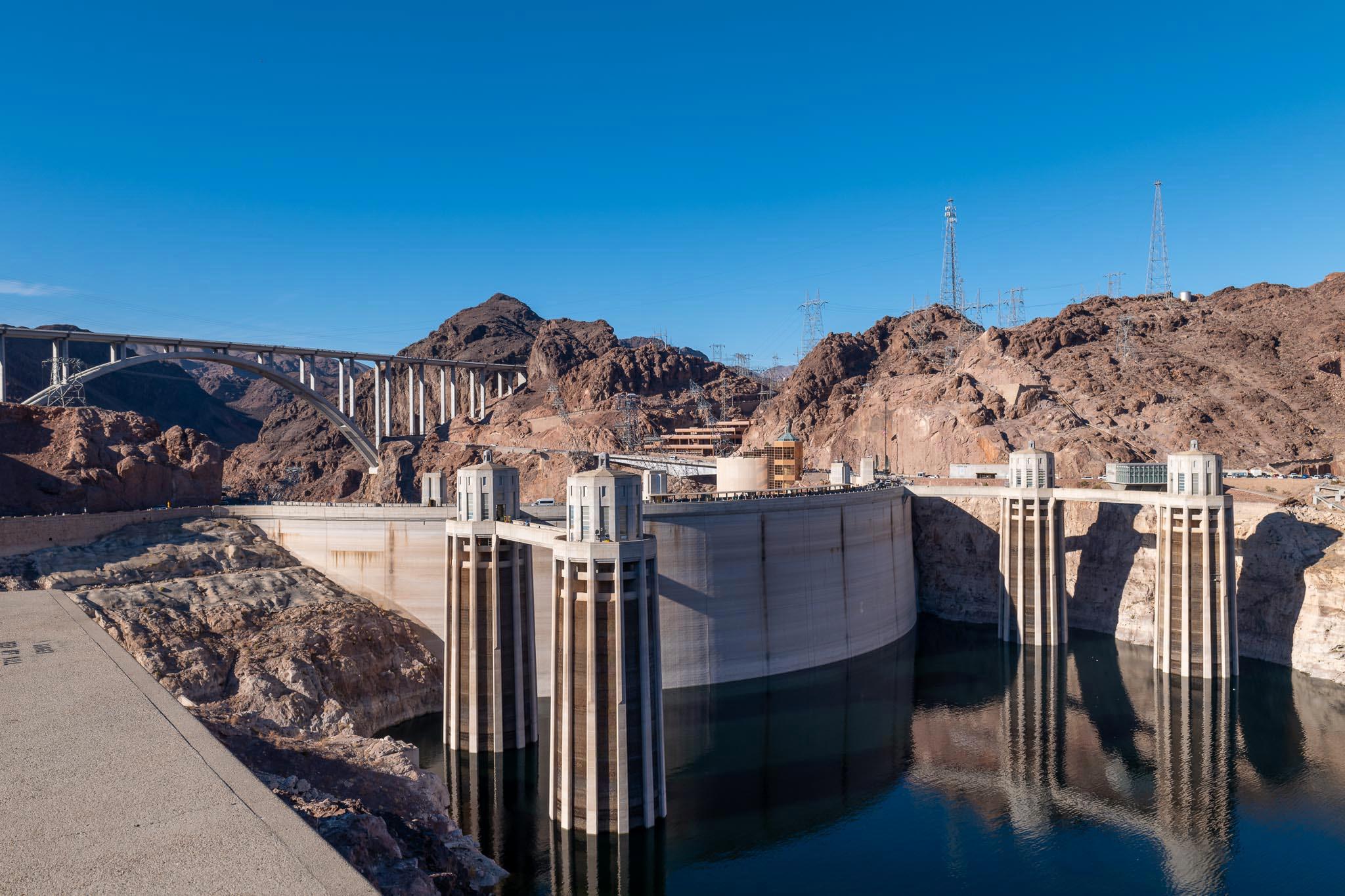
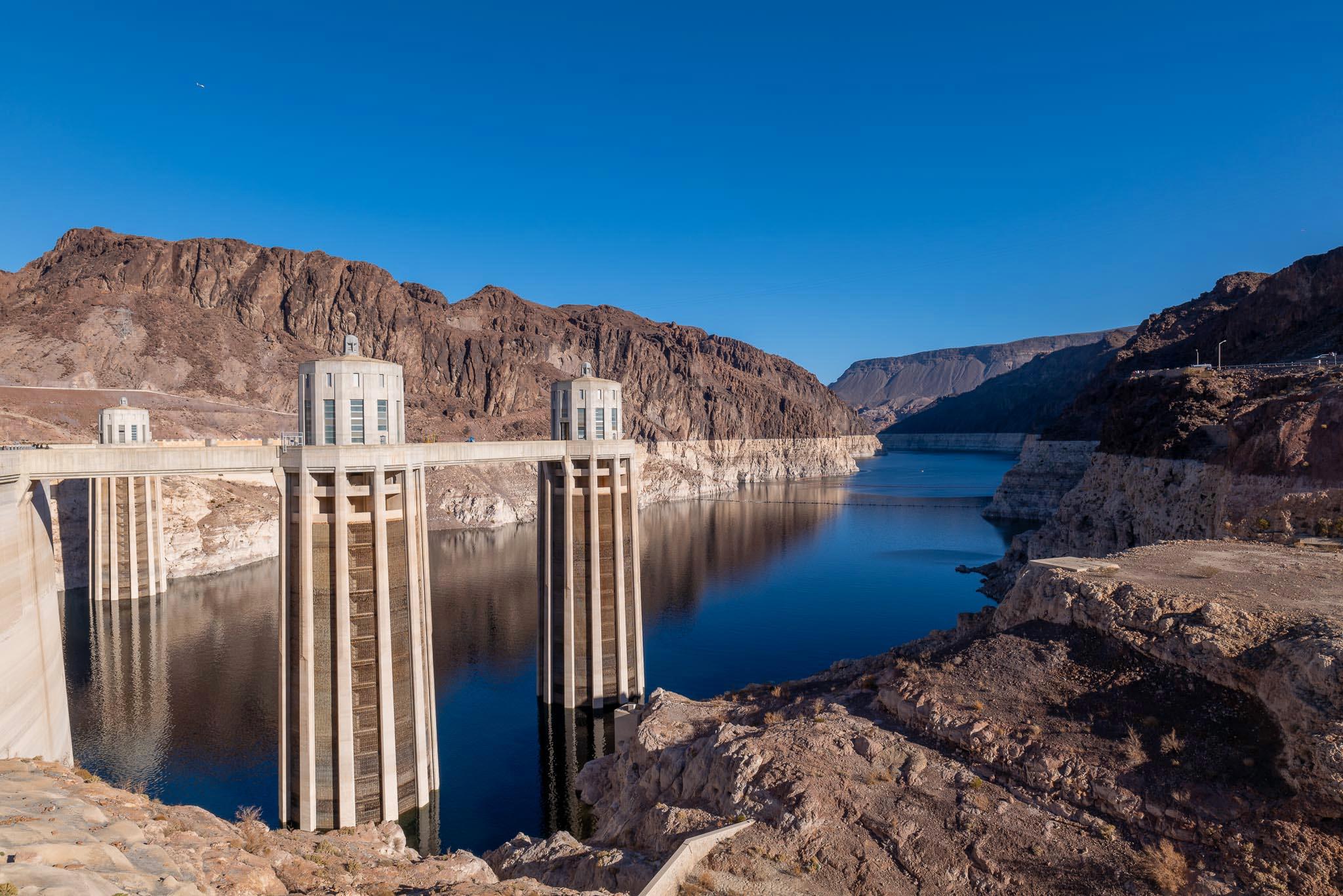
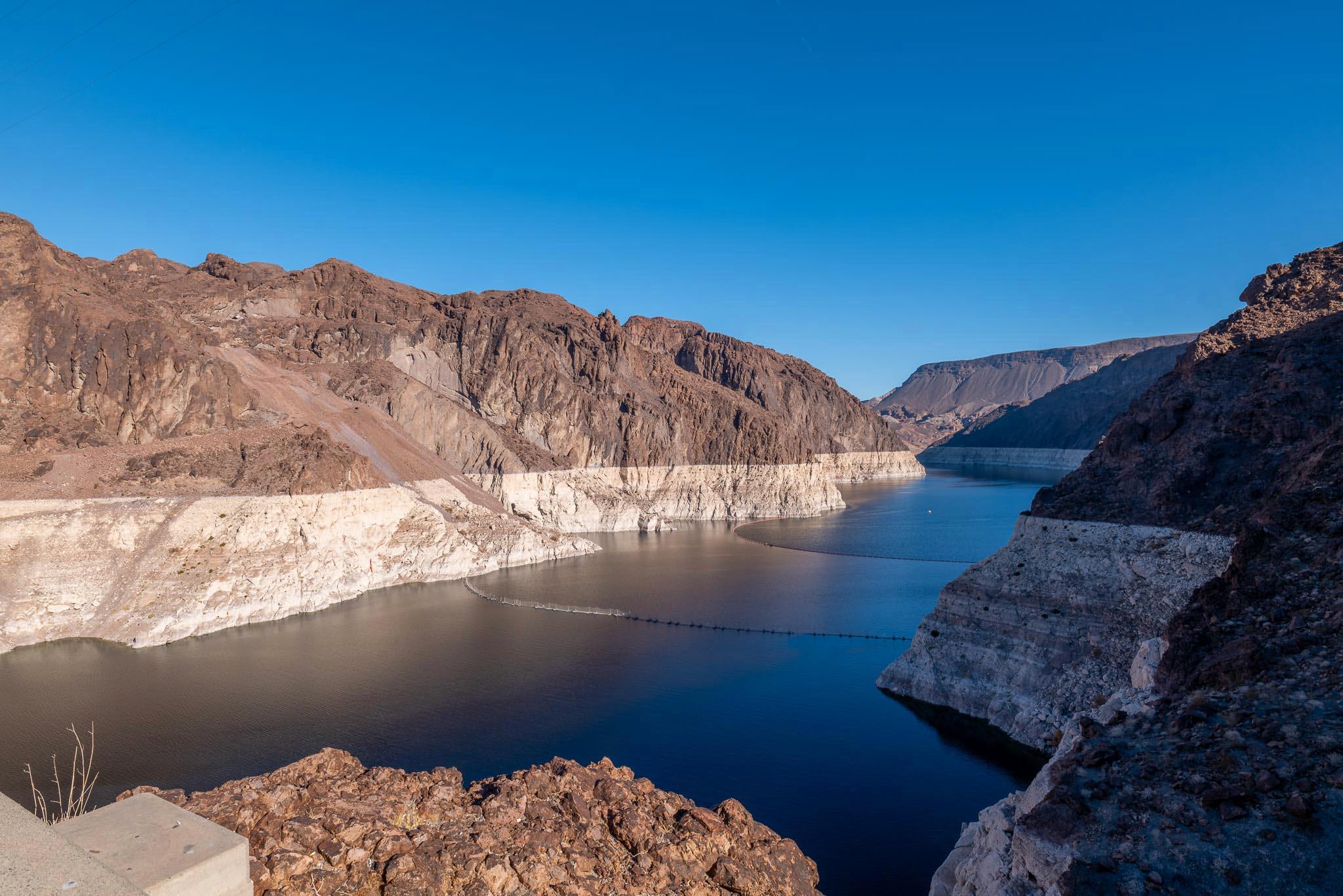
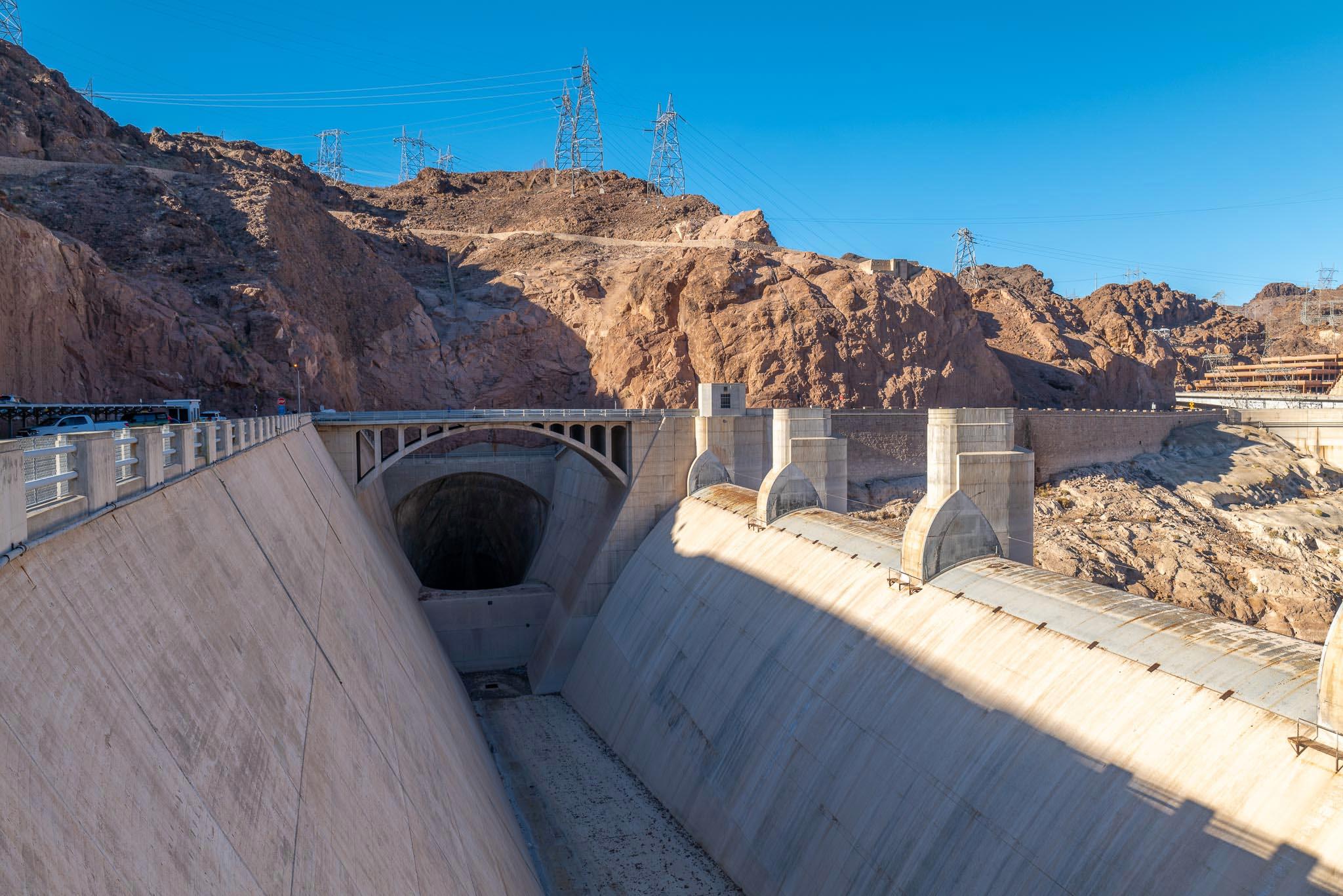
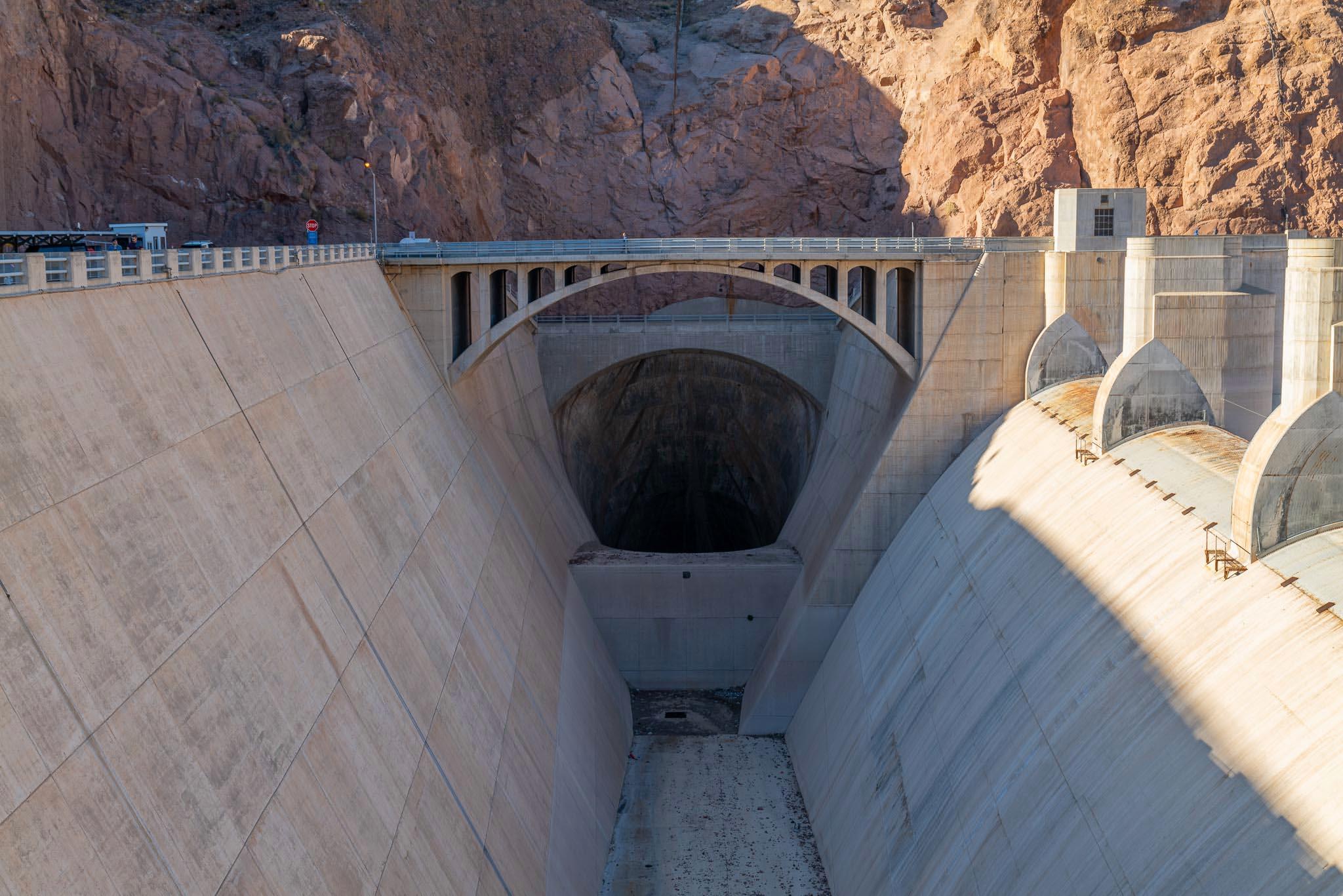
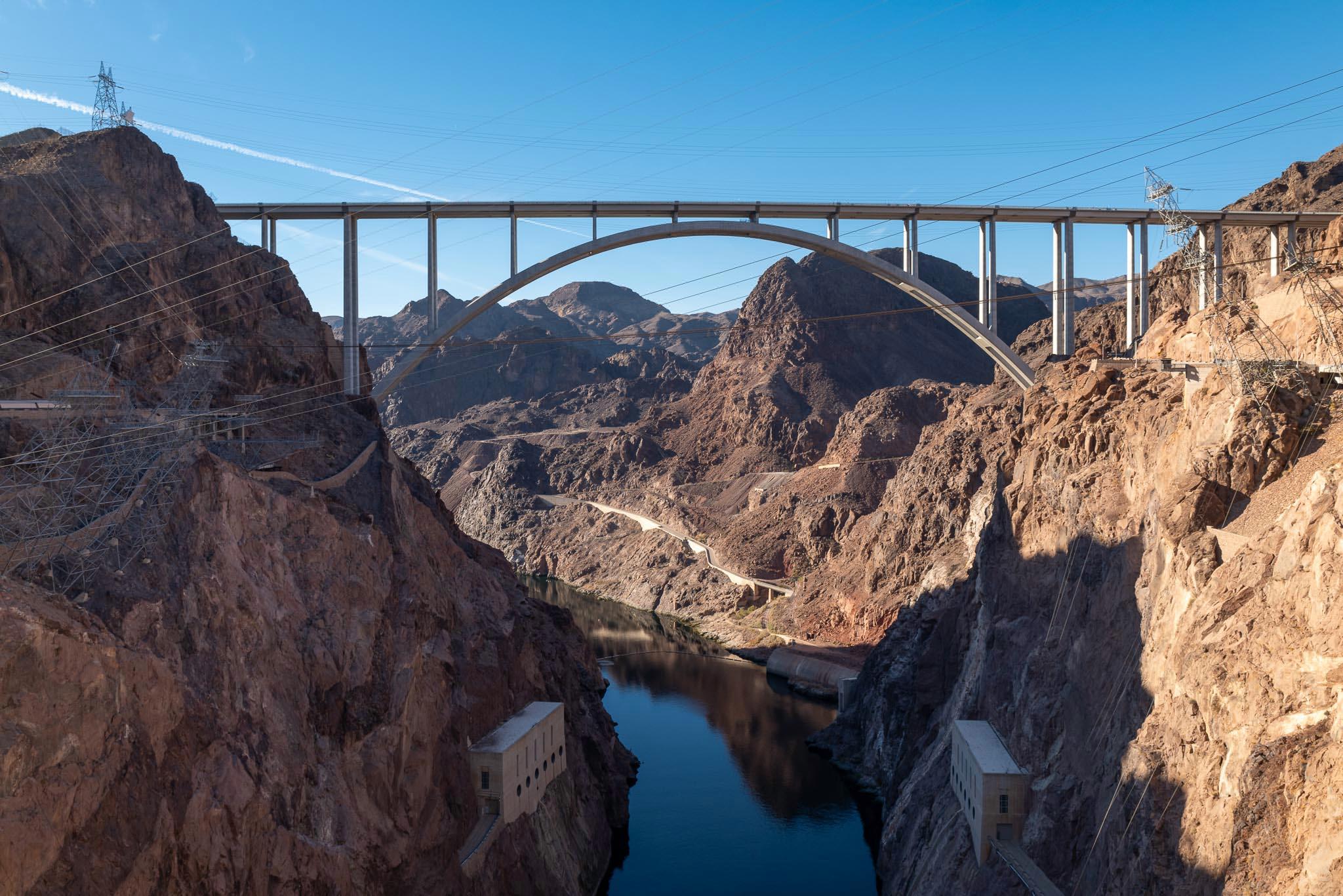
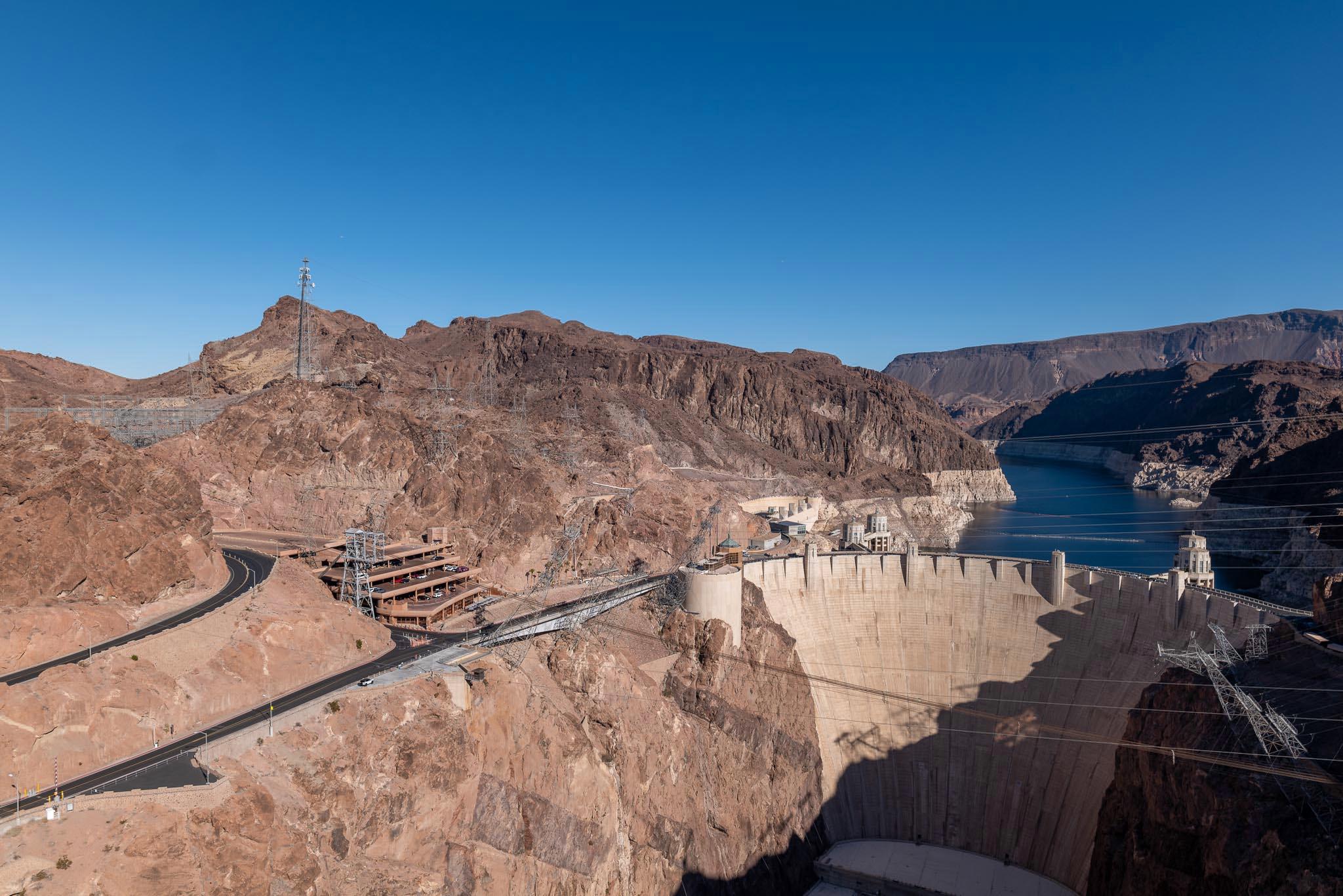
Keith
Thanks for the article and images from my old stomping grounds. It has been a couple of years since my last visit the to scenic overlook and the lower level of the lake is a bit disturbing for this Las Vegas native.
Here are a couple of bit of information that you may find interesting. As you noted the fins atop the spillway are adjustable. These were not part of the original construction, but were added later and provide the capability to raise the lake level an additional 50ft (15m). Plus, if you know where to look around the high points surrounding the dam, there are pill boxes that were built during WWII as protective measures for the dam. These are made made using rock from the surrounding canyon which lets them blend into the background.
PaulB
I’ve just bought a 21mm lens, and have been looking around at applications. Landscapes, check. Architecture, check. Massive engineering — well, not until I read this article. Nice going!
What lens did you buy?
My family and I have fond memories of visiting the Hoover Dam, including standing with one foot in each of two States. ‘course, I was glad I wasn’t there when they were filming “San Andreas” some years later!